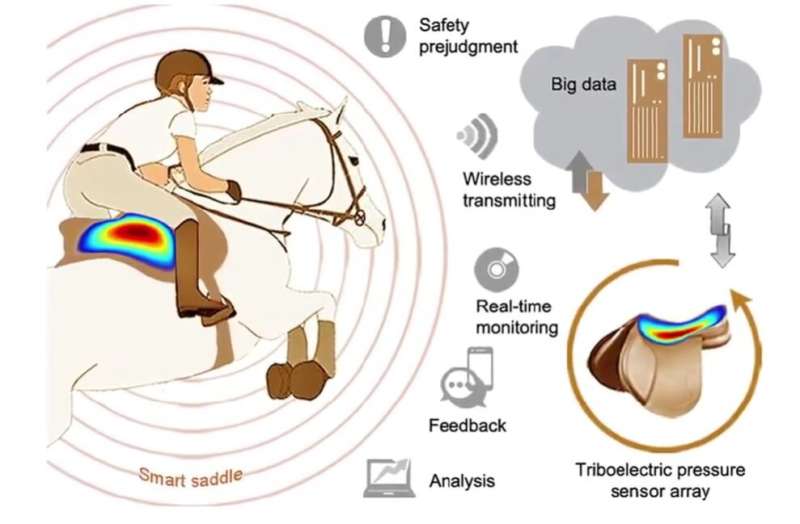'Smart saddle' could help equestrians hit their stride

Skilled equestrians make advanced riding maneuvers, like jumps, spins and piaffes, look effortless. But good riding requires balance and subtle cues to the horse, many of which are given through the rider's posture, seat and legs. Now, researchers reporting in ACS Nano developed a prototype "smart saddle" that could help equestrians improve their biomechanics. Moreover, the self-powered saddle can alert others when a rider takes a fall.
Big data collection and analysis are becoming important components of many competitive sports because they provide real-time information on athletes' performance and fitness. However, most systems are powered by batteries, often making them bulky and inflexible. In contrast, small, lightweight triboelectric nanogenerators (TENGs), which convert mechanical energy into electricity, are being tested for a variety of applications, from harvesting the energy of ocean waves to charging cell phones through walking. In addition to powering themselves, TENGs can convert mechanical stimuli, such as pressure, touch or motion, into electrical signals. Ding Nan, Baodong Chen, Zhong Lin Wang and colleagues wanted to adapt TENGs to a smart saddle for challenging and potentially dangerous equestrian sports.
The researchers made a thin, flexible, disk-shaped TENG that flattens when depressed and then rebounds when the pressure is removed. Under pressure, the internal layers of the TENG compress, transferring electrons from one electrode to another and generating a current, which stops when the pressure is released.
The team placed an array of seven TENGs on the top surface of a saddle so they could detect differences in pressure in various regions of the seat. Electrical signals from the array revealed whether a rider was leaning forward, sitting in an upright position or leaning backward. The smart saddle also detected when a person was standing up and sitting down (a motion called "posting" in the equestrian world). When a rider falls off, the system can transmit a wireless signal to alert others, a safety feature that could allow an injured rider to be quickly found and treated, which is especially important when riding alone. The self-powered smart saddle, which has a response time of 16 milliseconds, could someday provide real-time statistical data and fall detection to equestrians and their coaches, the researchers say.
More information: Yutao Hao et al, Self-Rebound Cambered Triboelectric Nanogenerator Array for Self-Powered Sensing in Kinematic Analytics, ACS Nano (2022). DOI: 10.1021/acsnano.1c09096
Journal information: ACS Nano
Provided by American Chemical Society





















